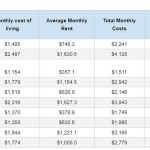Authored by Mac Slavo via SHTFplan.com,
The United States is not prepared for a catastrophic power outage, according to an alarming new report from the President’s National Infrastructure Advisory Council (NIAC).
The report, titled Surviving a Catastrophic Power Outage, explains the findings of the council, which is tasked with examining the nation’s “ability to respond to and recover from a catastrophic power outage of a magnitude beyond modern experience, exceeding prior events in severity, scale, duration, and consequence. Simply put, how can the nation best prepare for and recover from a catastrophic power outage, regardless of the cause?”
It begins with a grim statement in the Executive Summary:
After interviews with dozens of senior leaders and experts and an extensive review of studies and statutes, we found that existing national plans, response resources, and coordination strategies would be outmatched by a catastrophic power outage. This profound risk requires a new national focus.
The NIAC defines a catastrophic power outage as:
-
Events beyond modern experience that exhaust or exceed mutual aid capabilities
-
Likely to be no-notice or limited-notice events that could be complicated by a cyber-physical attack
-
Long duration, lasting several weeks to months due to physical infrastructure damage
-
Affects a broad geographic area, covering multiple states or regions and affecting tens of millions of people
-
Causes severe cascading impacts that force critical sectors—drinking water and wastewater systems, communications, transportation, healthcare, and financial services—to operate in a degraded state
Actions that all levels of government need to take to prepare are discussed in the report, as summarized in this chart:

Here’s more from the 94-page report (emphasis ours):
The NIAC was challenged to think beyond even our most severe power disruptions, imagining an outage that stretches beyond days and weeks to months or years, and affects large swaths of the country. Unlike severe weather disasters, a catastrophic power outage may occur with little or no notice and result from myriad types of scenarios: for example, a sophisticated cyber-physical attack resulting in severe physical infrastructure damage; attacks timed to follow and exacerbate a major natural disaster; a large-scale wildfire, earthquake, or geomagnetic event; or a series of attacks or events over a short period of time that compound to create significant physical damage to our nation’s infrastructure. An event of this severity may also be an act of war, requiring a simultaneous military response that further draws upon limited resources. For the purpose of this study, the NIAC focused not on the cause, but rather on the consequences, which are best categorized as severe, widespread, and long-lasting.
While most of the report’s focus is on actions that government agencies need to take, the report (on page 14) does mention preparedness for individuals as well:
People no longer keep enough essentials within their homes, reducing their ability to sustain themselves during an extended, prolonged outage. We need to improve individual preparedness.
Most preparedness campaigns call for citizens to be prepared for 72 hours in an emergency, but the new emerging standard is 14 days.
For example, Washington, Oregon, and Hawaii have a standard that individuals have enough food and water to support themselves for 14 days. These efforts could serve as a model for federal and state preparedness resources, campaigns, and training.
The idea of individual preparedness is not a new concept. Civil defense, an older term used to elevate a level of individual preparedness and activate communities, used to be be more widely accepted.
FEMA offers a number of tools, resources, and guidance on emergency preparedness, including recent efforts focused on better financial preparedness for disasters, and working with interagency partners on activity books and courses to educate students on emergency preparedness.
The NIAC is not the only group that has recently issued a report that contains dire warnings for the US. Just two weeks ago, the U.S. Air Force Electromagnetic Defense Task Force (EDTF) published a report that claims “electromagnetic pulse (EMP) and other electromagnetic threats pose an unprecedented threat to U.S. military power and national survival.”
The EDTF report examined threats from across the electromagnetic spectrum, including nuclear and non-nuclear EMP, geomagnetic disturbance (GMD), lasers and optics, directed energy (DE), and high-power microwaves (HPM), along with management of these threats.
Dr. Peter Pry (who served as chief of staff of the Congressional EMP Commission, on the staff of the House Armed Services Committee and at the CIA) highlighted some of the report’s findings in an article for The Daily Caller:
-
Protracted blackout of the electric grid could cause U.S. nuclear reactors to “go Fukushima” and contaminate vast regions with radioactivity, crippling U.S. capabilities to mobilize and project military power and threatening the lives of the American people.
-
U.S. military bases depend upon the civilian power grid and would be paralyzed by a protracted blackout.
-
Communications, transportation, food and water that sustain both the U.S. military and the civilian population are all at risk to electromagnetic threats.
-
“Based on the totality of available data, the Task Force contends the second- and third-order effects of an EMS [Electro-Magnetic Spectrum] attack may be a threat to the United States, democracy, and the world order.”
Both reports should provide an incentive to prepare for a grid-down event, if you haven’t adequately prepped already.
There are a few (totally insane) things you can expect during a grid failure.
If you are looking for a simple guide for beginners or for more advanced preppers to help you prepare for the possibility of a power grid failure, try reading The Prepper’s Blueprint. Written by Tess Pennington, the book expertly lays out effective ways everyone can begin to prepare for any apocalyptic situation.
“If we have learned one thing studying the history of disasters, it is this: those who are prepared have a better chance at survival than those who are not.” -The Prepper’s Blueprint












